This was our first of two days in Kalyarr National Park. The park is made up from former sheep grazing properties that were purchased and incorporated into the park. It contains important plant communities as well as cultural and heritage sites. On this day we planned to visit the section that contains part of the Thelangerin Property.
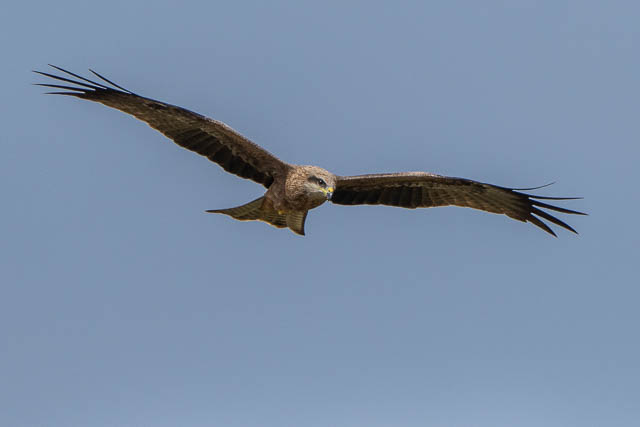
We were also very fortunate in having a guide – Susan, an old friend of Valerie’s. Susan is a member of the McFarland family that owned the property since 1872 and she accompanied us the whole day.
On the way, we passed the historic One Tree Hotel. Built in 1862, ist was once staging point for Cobb and Co coaches. More recently it was used as a set for a Mad Max film.
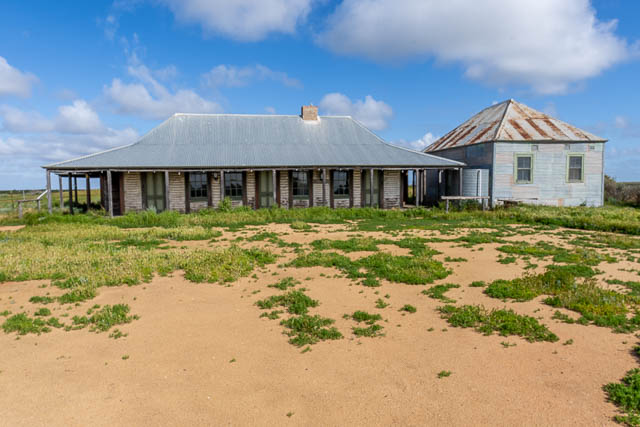
On the Hotel chimney was the guardian, a Nankeen Kestrel –
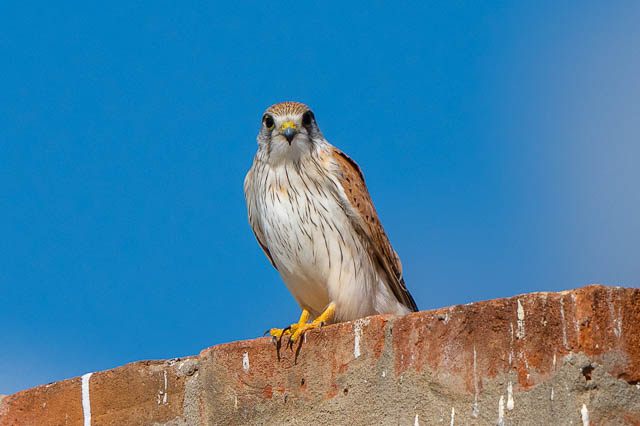
Contining along the road, we saw many more raptors. Here is a Black-shouldered Kite –
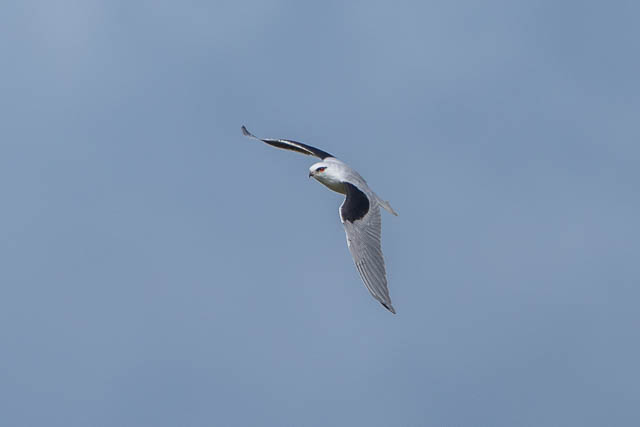
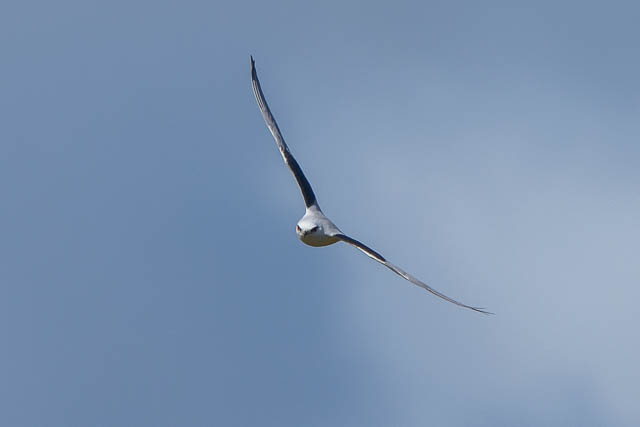
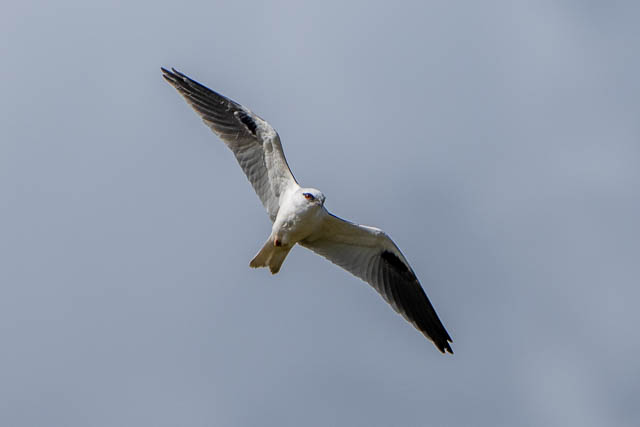
And a Black Kite –
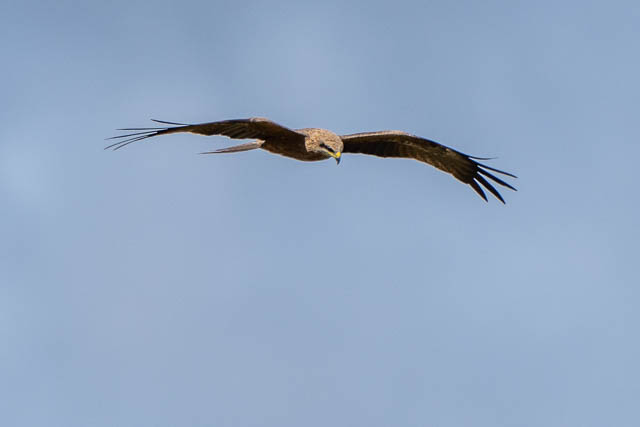
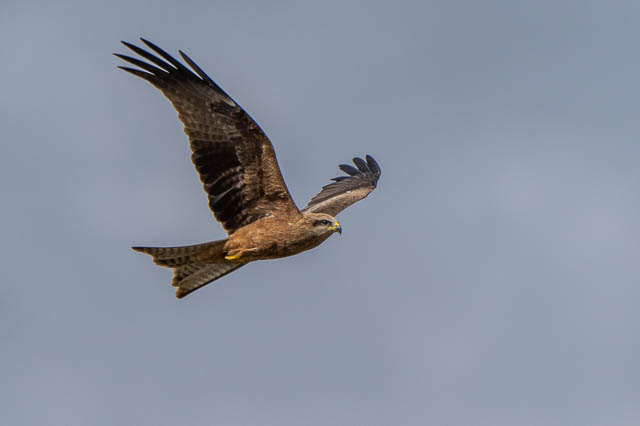
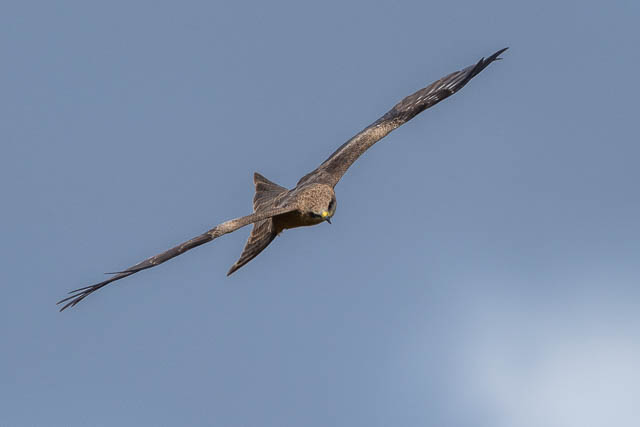
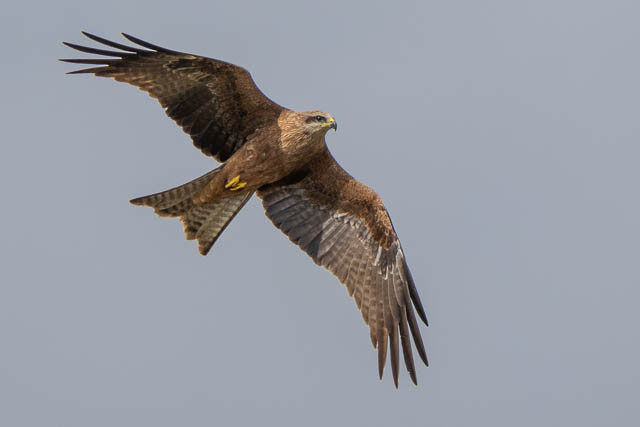
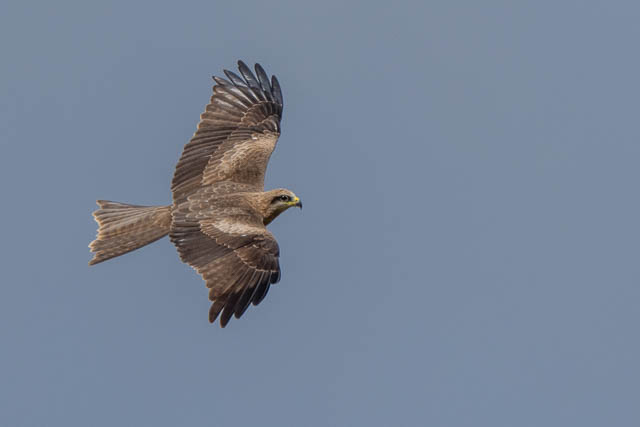
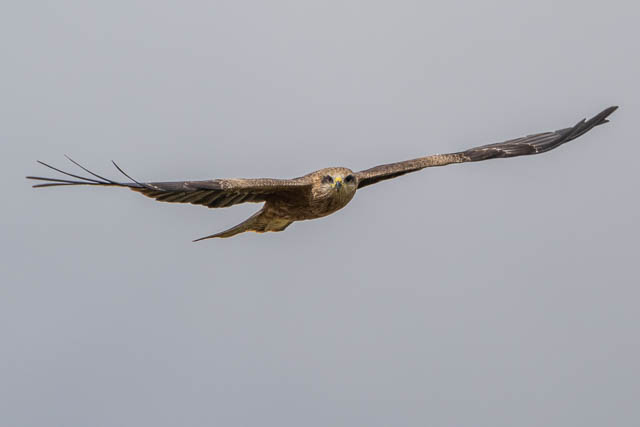
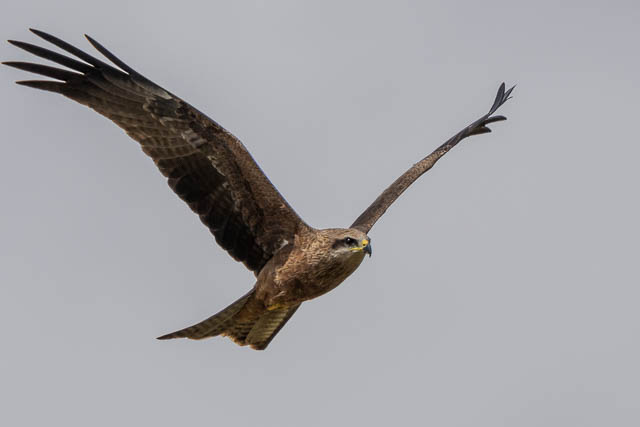
And then a drone appeared!
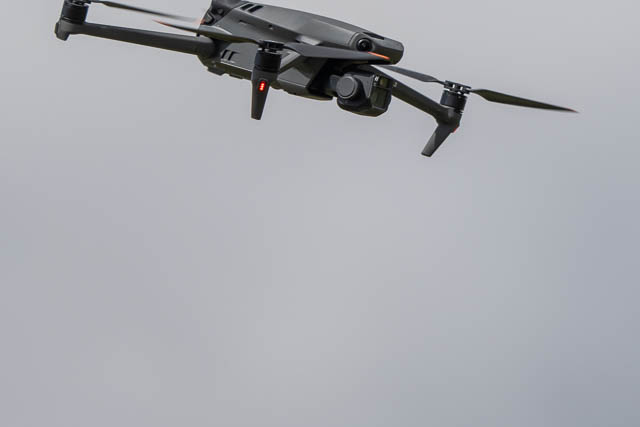
It was being used by drovers checking on their stock. They were using the “Long Paddock” – the travelling stock route along the road to graze their sheep, as their property was under water.
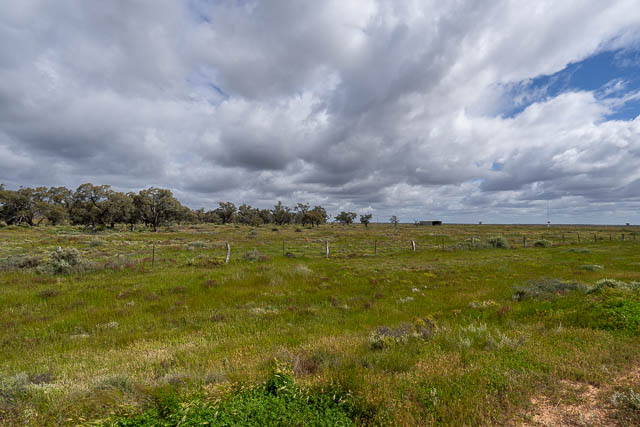
We crossed the Lachlan River at Corrong. Here we could see some feral goats –
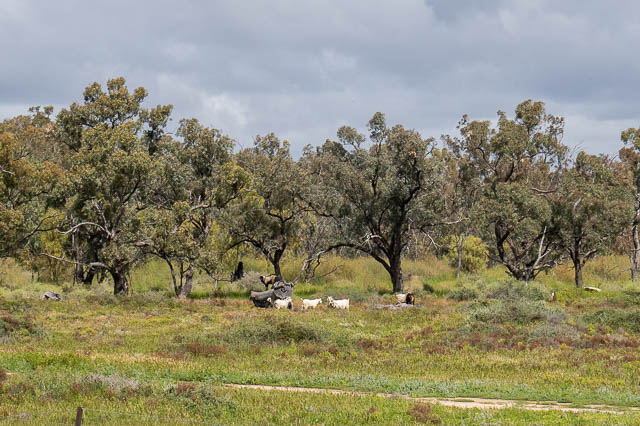
The Lachlan River was very full.
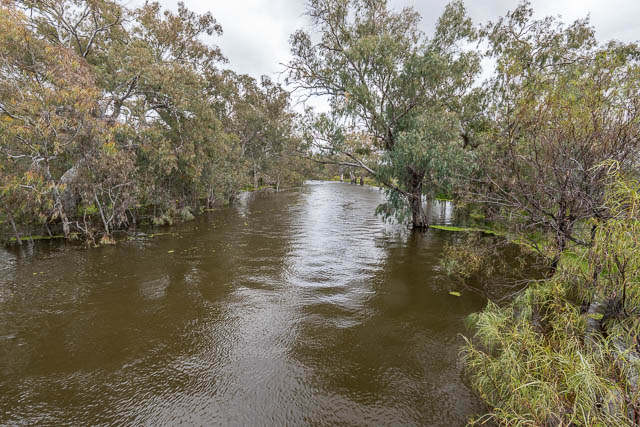
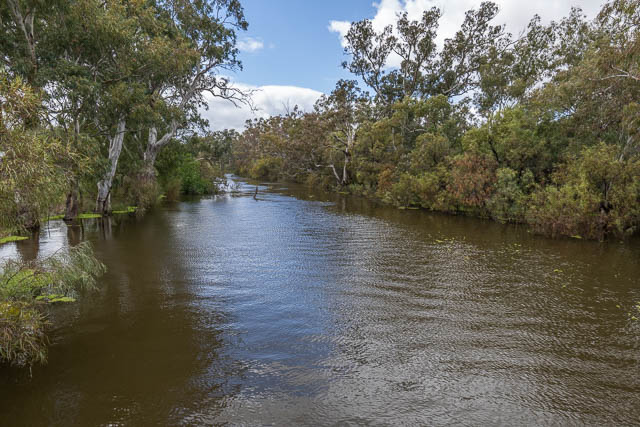
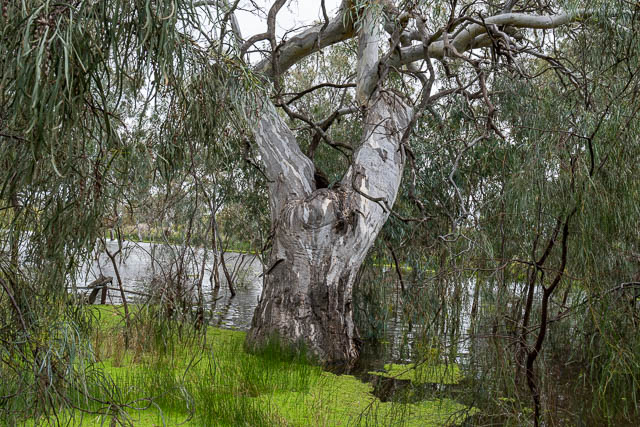
Next, we headed back along the road and turned off to Thelangerin. This part of the property is now part of the National Park and includes the old shearing shed –
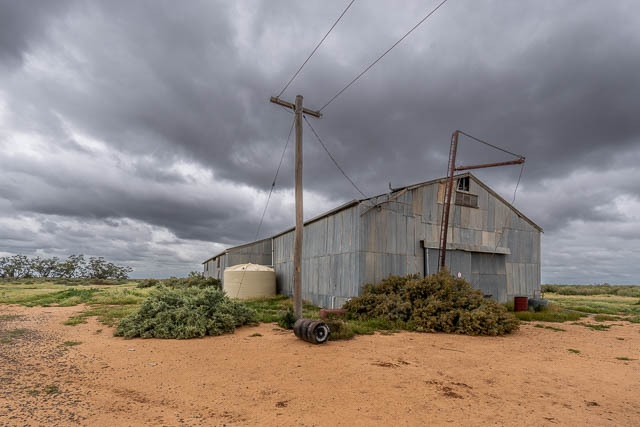
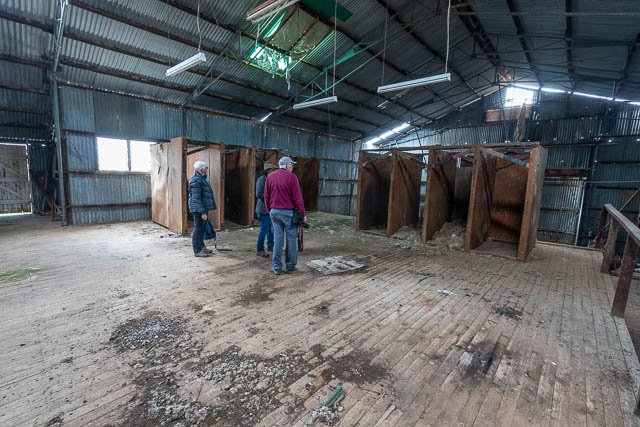
It was interesting to see inside. We could see where the shearers worked –
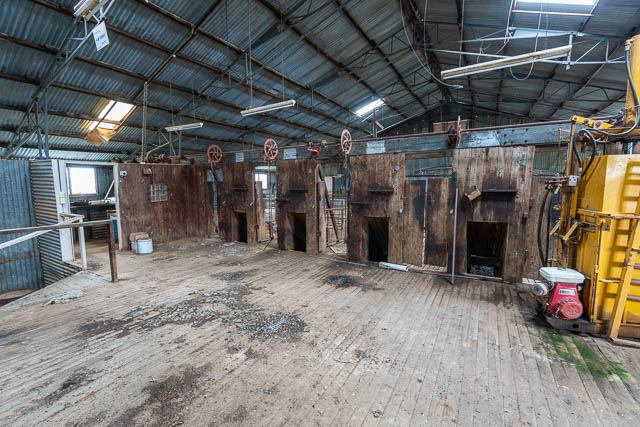
And in the area below would have been the large wool table. It was used to sort the wool from the fleece into the cubicles.
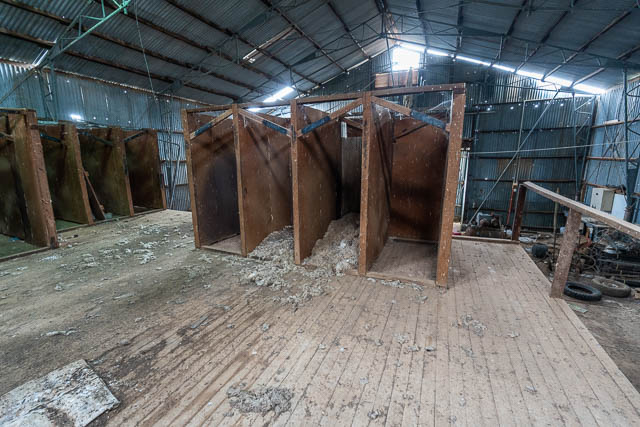
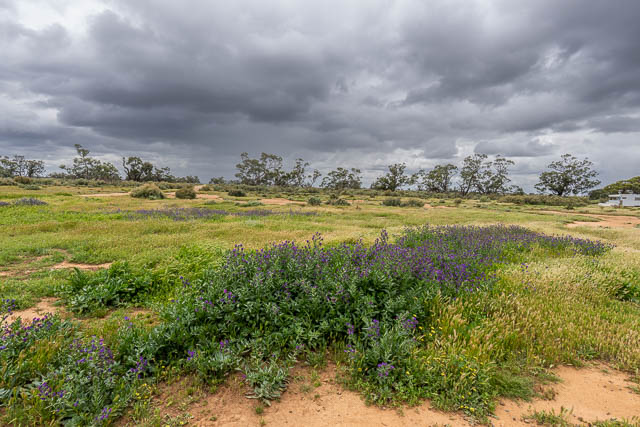
We had lunch in the shearer’s dining room.
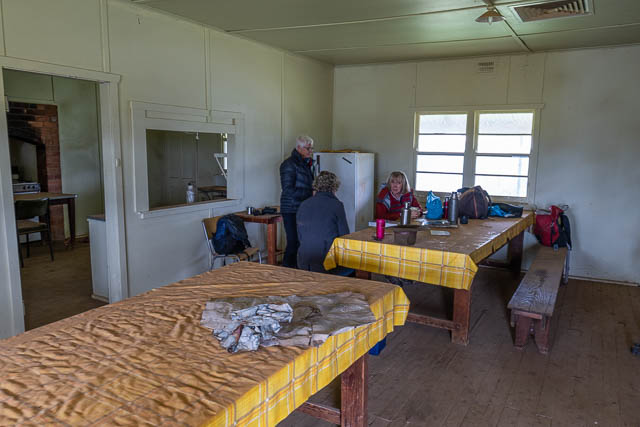
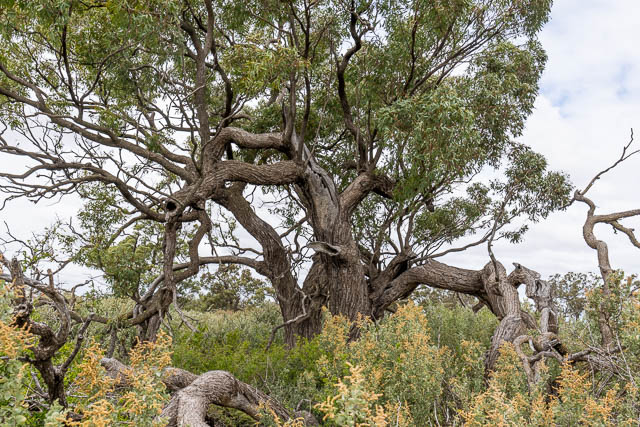
Another Black Kite –
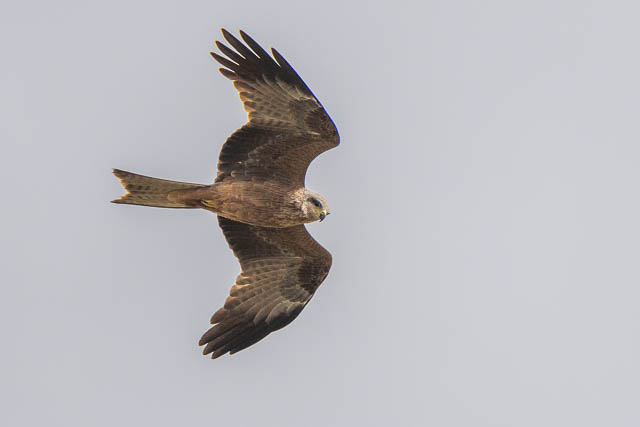
Billy Buttons (Craspedia uniflora)
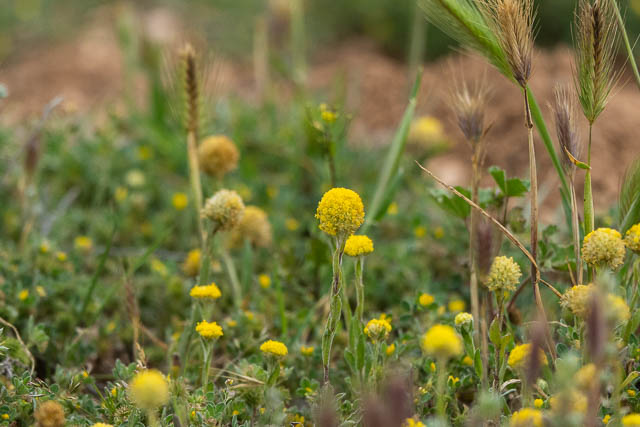
Red Kangaroos
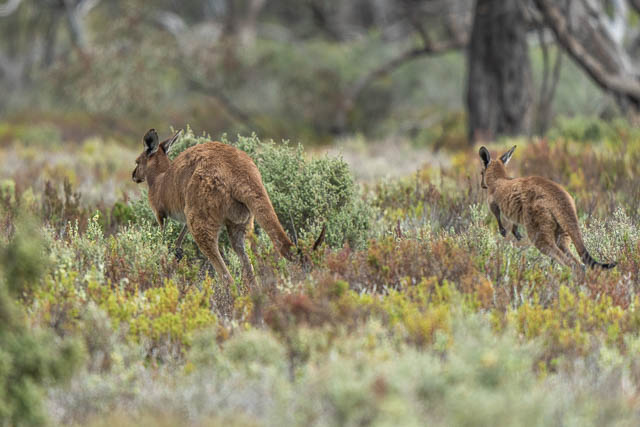
Black Box (Eucalyptus largiflorins) woodland near the Lachlan River –
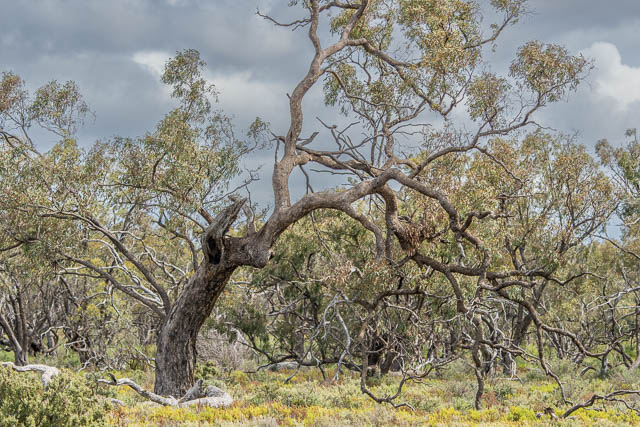
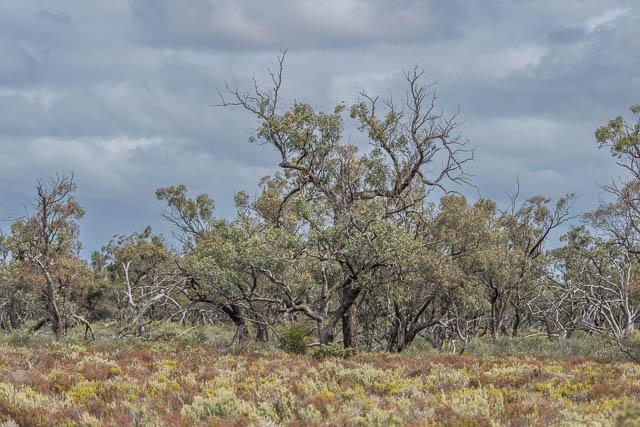
I think this is Slender Darling Pea (Swainsona murrayana) –
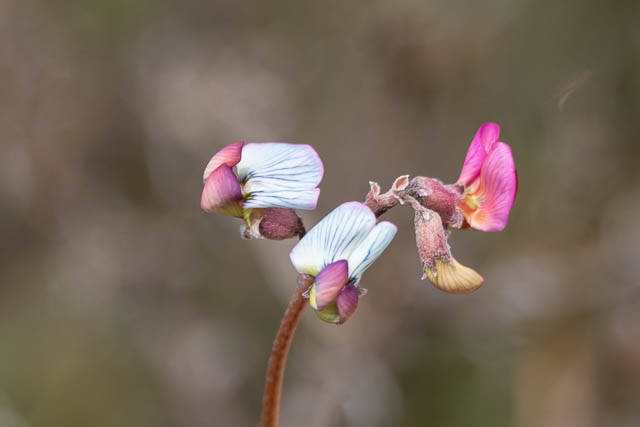
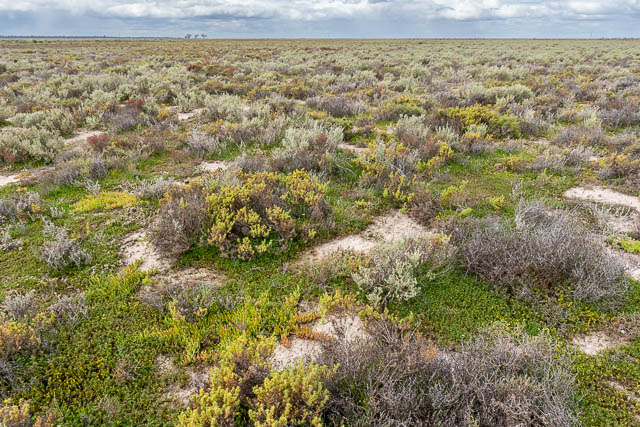
We spent some time looking for flowers amongst the saltbush –
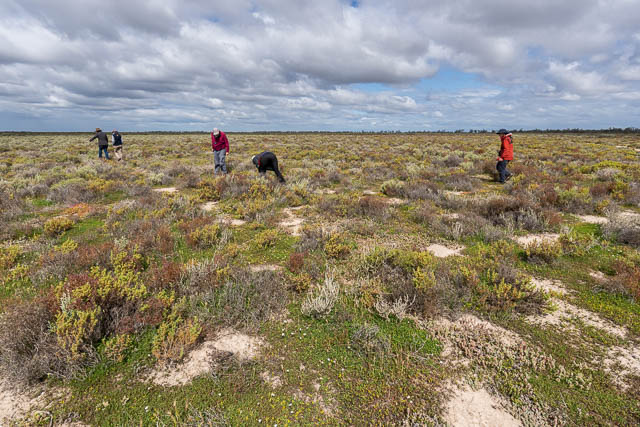
Here is some Round-leaf Pigface (Disphyma clavellatum) –
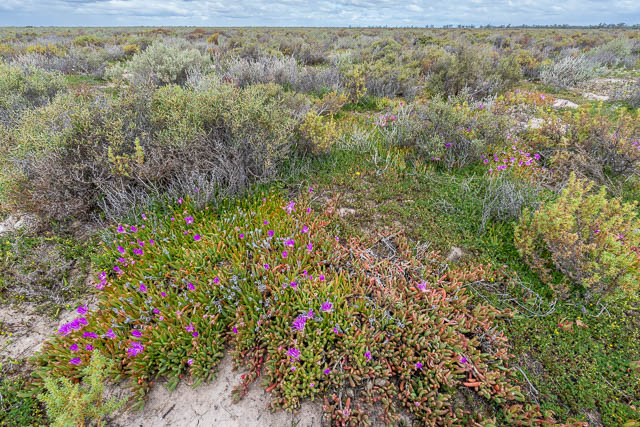
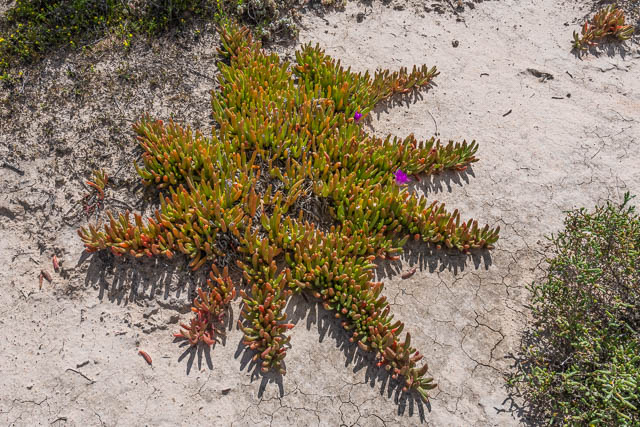
A lot of the Black Box near the Lachlan River was underwater. Here we saw some Black-tailed Native Hens –
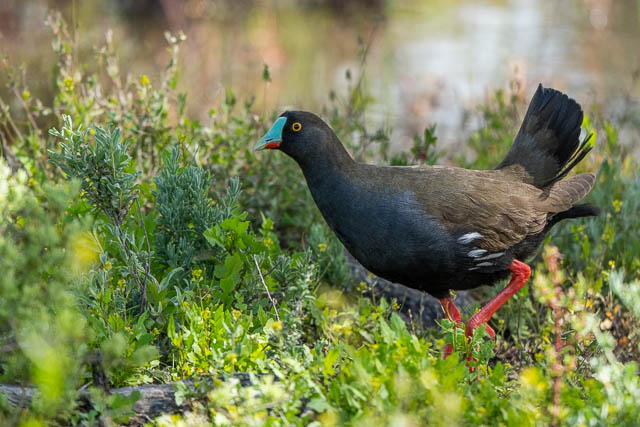
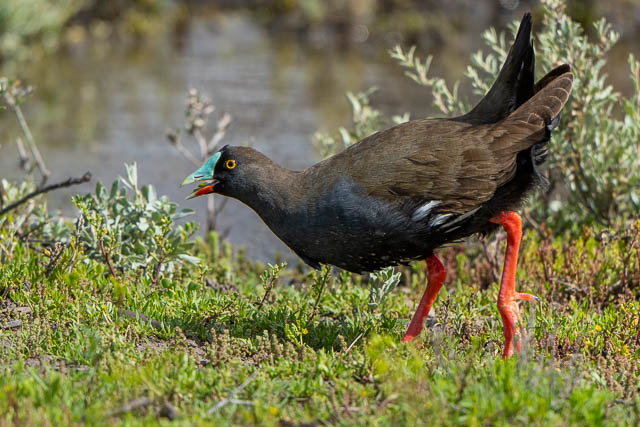
Here are two having a squabble –
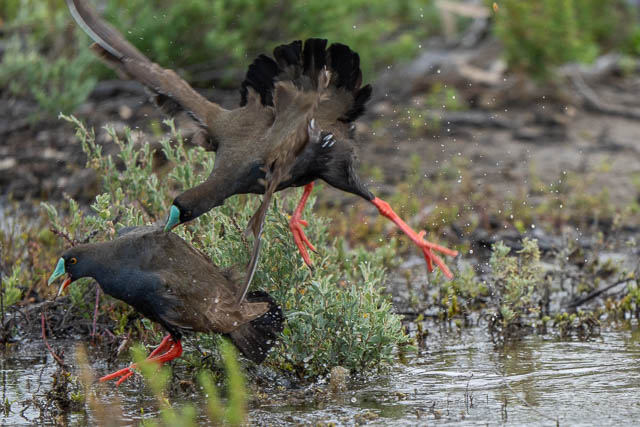
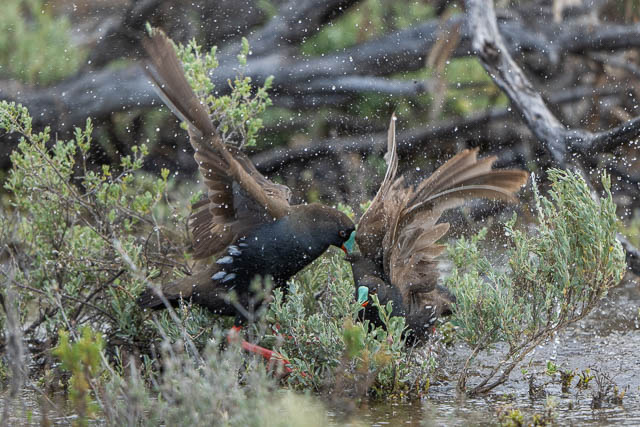
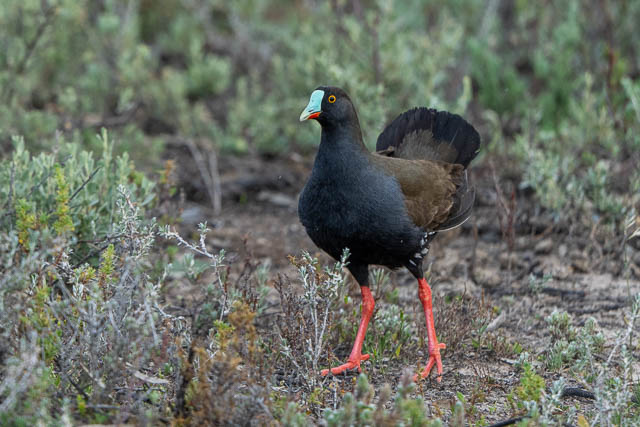
Driving back we saw this Emu with 13 chicks. The male takes care of looking after the chicks when they hatch. He takes them away from the flock.
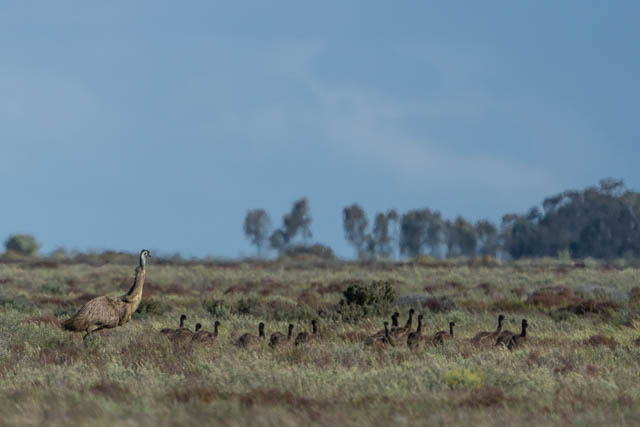
Black Kites were the most common raptor we saw –
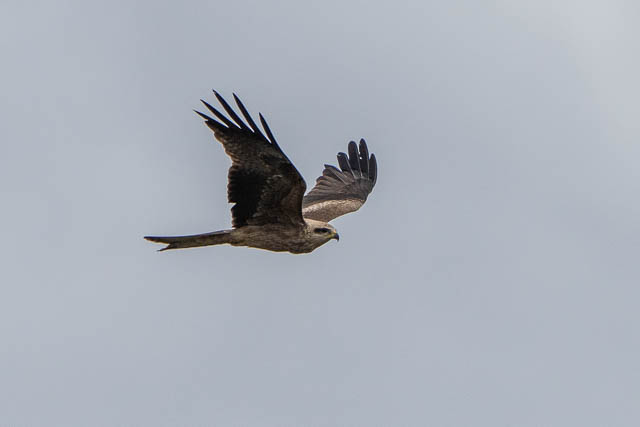
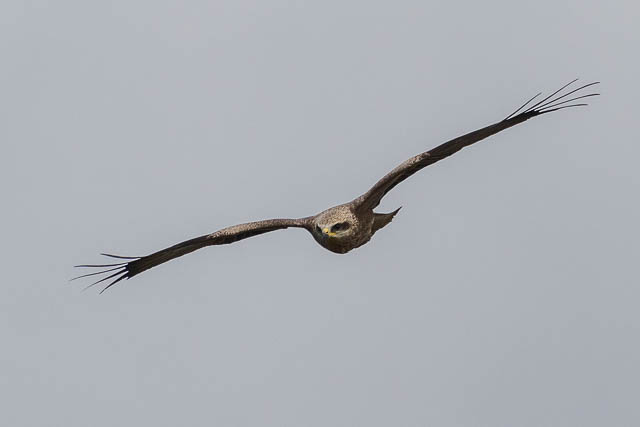
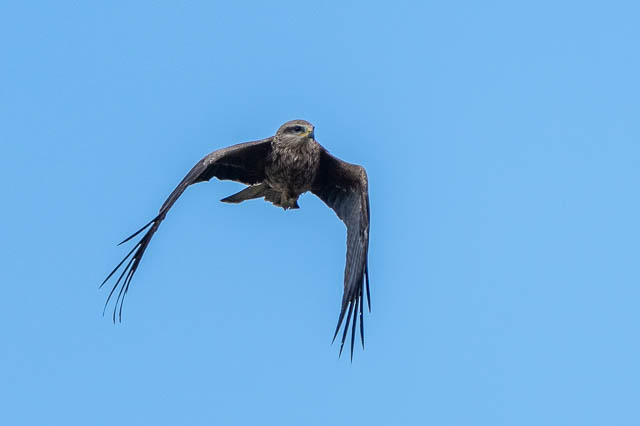
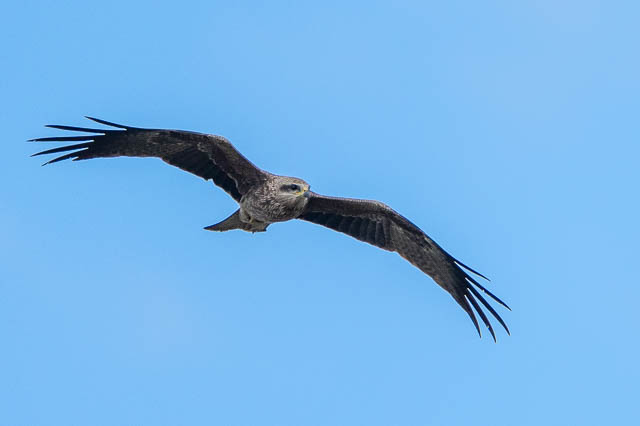
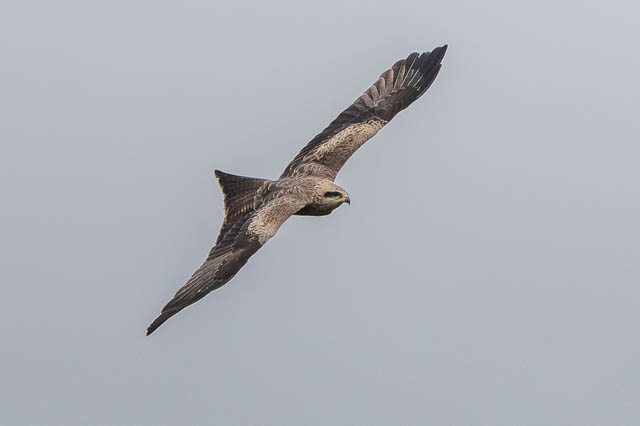
This one is a Brown Falcon –
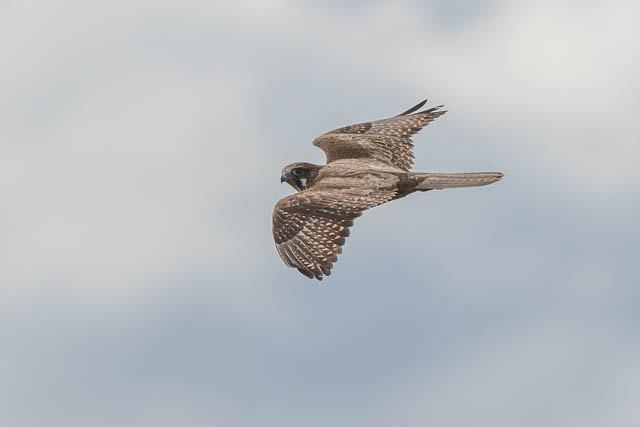
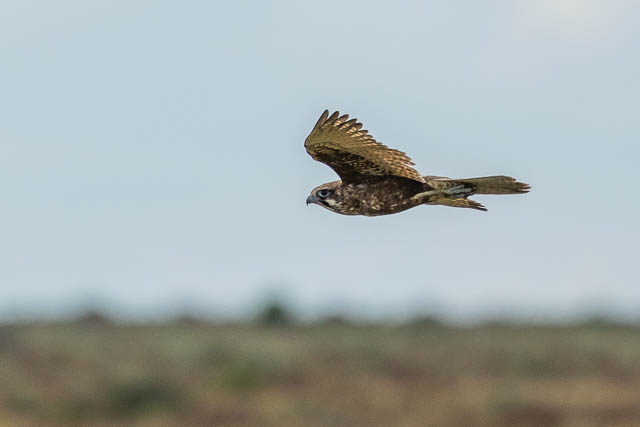
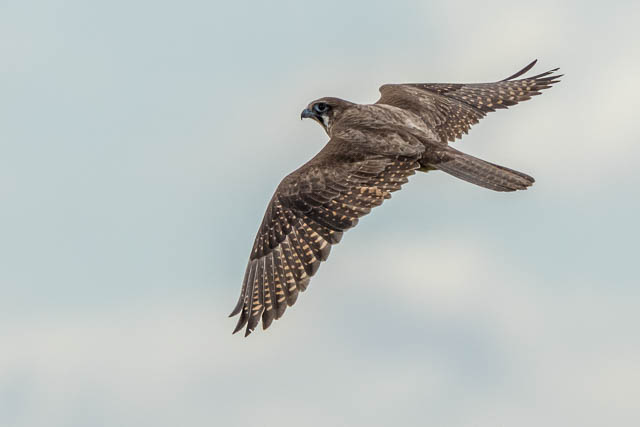
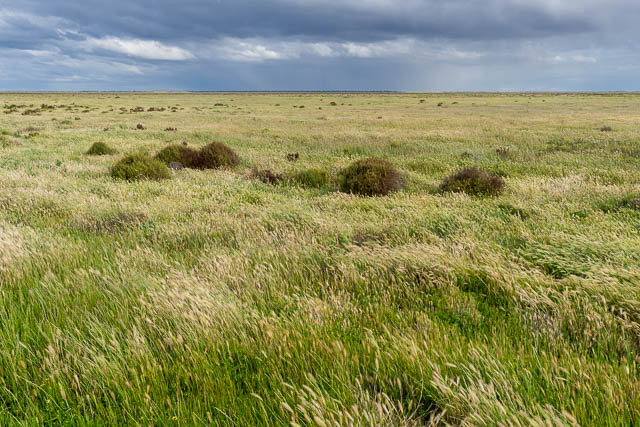
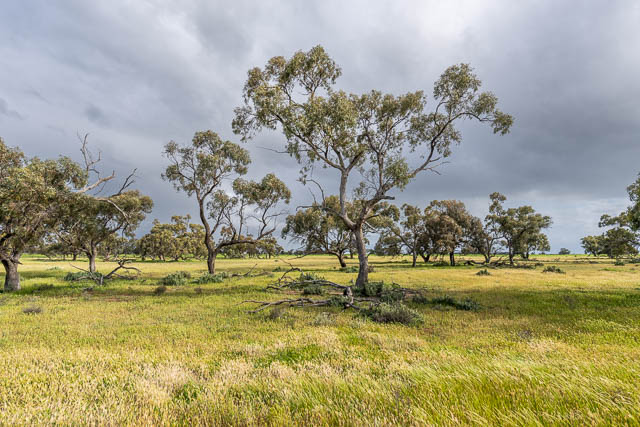
As we approached Hay, the afternoon thunderstorm was also appeared.
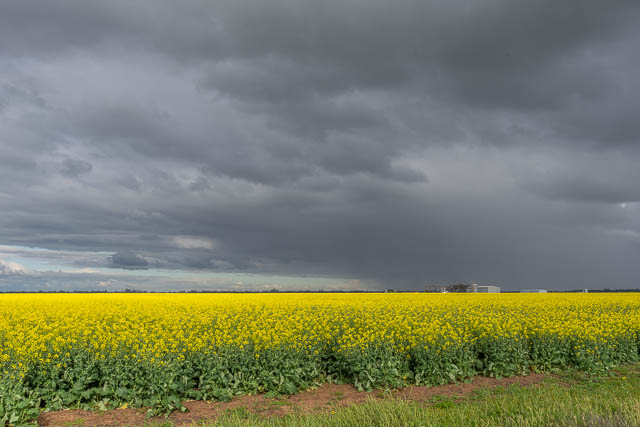
On the wayback we made a visit to the Hay Railway Station.
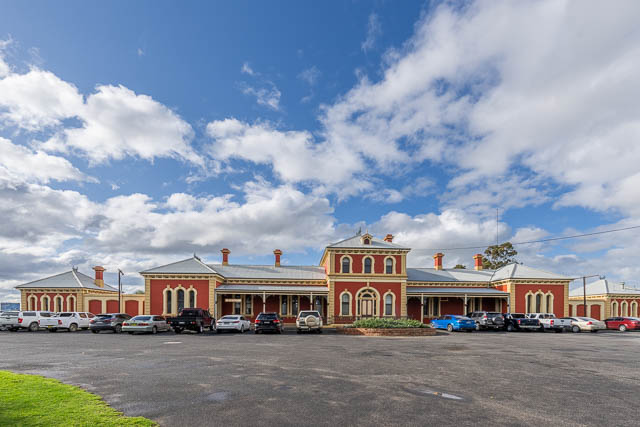
This very impressive building is no longer used as a station. Two carriages form the Duneera Museum.
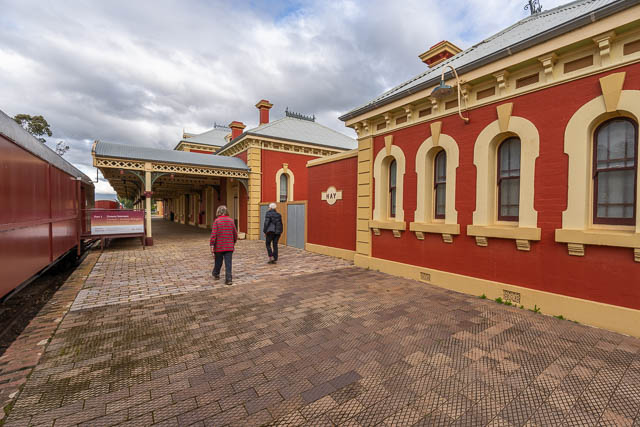
Special thanks to Susan for accompanying us on the day and for her interesting stories and information.

David I understood Kalyarr NP was closed. Is this not the case?
Thanks,
JennyW
We were very lucky with our timing. The park had been closed, and was just opened a little before our trip. I imagine it closed again soon after – with the new falls of rain and more floods.
We’ve just returned from a trip especially to visit Thelangerin. My grandparents Mary Agnes Ramsey and Henry Honeyman worked on the property as laundress and cook respectively in the 1920s. My grandmother had left Larne in Ireland on the steamship Ballarat on 26 January 1922 (aged 21) and gone straight to Thelangerin to work as a ‘domestic’. They married soon after meeting and my mother Mary Jean Honeyman was born exactly one year to the day later, 26 January 1923. Their marriage certificate shows their address as Thelangerin. Can anyone tell me more about what is happening to the old house? It looks to have a new roof and is being renovated? I’d love to see old photos.
The original homestead that Jennie-Brand-Miller’s grandparents worked in was, I always thought, very grand, with formal entertaining areas, work areas and lots of bedrooms around three sides of a quadrangle. I’m not sure if it is included in the National Park estate or not, but yes, the roof has needed replacing for a long time.
I grew up on Norwood which is now also part of Kalyarr NP, on the Lachlan too, 8 miles downstream from Thelangerin. It was a small property cut off from Thelangerin post-WWI. My parents bought Norwood in 1939. Oxley and Geramy Stations, owned by another branch of the McFarland family were downstream of us. Over the decades we regularly visited the Thelangerin McFarland family, Mr. and Mrs. Eric (Jean) McFarland, initially and later their son, Sholto and his wife, Elizabeth, who lived in another house. I became godmother to Sholto and Elizabeth’s daughter, Susan.
I absolutely loved the old homestead. The kitchen was on one side of the courtyard with a huge wood stove and adjacent rooms for ironing etc – generally a servants’ area. There was a big roller for sheets which your grandmother, Jennie, probably used. Directly over the other side of the courtyard was a very grand dining room. Next to it the entrance hall and on the other side of that the equally grand drawing room. French windows from both these grand rooms and the front door in between opened onto a wide front veranda. A row of bedrooms ran down the side joining up with the kitchen block. And for me the piece de resistance was the cellar with stairs going down to it. I never knew stairs except these. As a little girl in the 40’s I just wanted to keep going up and down them. It was cool there where butter, wine and various other bulk food supplies were kept.
Another small wing next to the kitchen area had Mr. Eric’s office. He had the telephone switchboard there and put through ours (number 141N) and maybe three other lines to the Hay exchange. He managed the station from this office – a very astute, knowledgeable and taciturn man with a cunning sense of humour. Mrs Eric was the direct opposite being a non-stop chatter-box, very quick-moving, ever so hospitable. I’d have schoolfriends to stay and take them over to Thelangerin, to see a real station homestead (ours was a five-roomed timber cottage with veranda most way round) and she showed us right way through the whole house.
Susan, now Dye, has all the McFarland Thelangerin diaries. She lives at “Tchelery”, Moulamein, 2733, and is happy for you to make contact and view the diaries. She probably has photos too.
My grandmother, Amy, (actually Annie Amy) was a Honeyman. All Honeyman’s around Hay are descendants of John, I think it was, who came out from England with wife, Annie, and two young boys and bought the wool scour at Maude. Amy was the daughter and only surviving child of William and wife Emma. All the Honeyman’s around Hay are descended from William’s brother. Amy did the books for the family wool scour at Maude until her marriage to James Anderson. So, I am distantly related to you, Jennie. Valerie Atkinson (nee Smith).
Hi Valerie
Thank you SO MUCH for responding with such detail. To think you are related to me and also went in and out of that house gives me goosebumps. It wasn’t til my mum (born to Henry and Agnes Honeyman) died 4 years ago that I became interested in family history. I hadn’t even visited her childhood town of Booligal. But I’d often wondered if the station/house where my grandmother worked as a young adult still existed. I didn’t know the name Thelangerin til I purchased their marriage certificate a couple of years ago.
It will William Honeyman Snr from London who bought the wool scour at Maude with his wife Annie and sons Thomas and William. William and Annie’s gravestone is on the Maude property. Thomas married Mary Bourke/Burke in 1980 and went on to have 13 children but not all of them lived. My grandfather Henry Honeyman was their 8th child. My 1st cousins are Gary (now in Wagga), Trish and Kerry (both in Hay) who I visited on my recent trip to the Riverina.
Trish showed me some of the books from the wool scour and some photos of William and Annie Honeyman, Thomas and William Jnr as boys. I’ve got digital copies if you’d like to have them. How best to share them with you?
I would like to visit Susan at Moulamein if she is willing on our next trip to Hay.
PS Do you know anything about the property at Maude called Greenhithe where William and Annie lived?
Hi Jennie, I think William and Emma must have moved into Greenhithe, which was downstream of both the punt and of the punt-man’s cottage at Maude as my mother, Ruth, (known as Kit), nee Anderson, talked of her mother, Amy, rowing her and brother Bill (yet another William!) across the river to visit her grandparents at Greenhithe. Kit loved Emma’s hanging pot plants and unruly garden also a toy from which a snake popped out. She, Emma, had a marvellous sense of the ridiculous which my mother inherited. Amy, Jim and children lived at Ravensworth-on-the-River then. They moved away from Maude then back to Ravensworth on the Plains, 12 miles south of Maude.
After the war our family used go by horse and sulky to visit my grandparents on the plains. I remember going down the very steep bank in the sulky then Dad helping the punt-man turn the big wheel to pull the punt over the ‘Bidgee. The Honeyman’s no longer owned Greenhithe and I never visited that house. I believe it burnt down maybe in the 1980’s.
There were Millers at Maude too, a young Miller family ran the Maude store about a decade ago – more relatives?
Somewhere I have photos too of the grave of William Snr and Annie Honeyman at Maude. Emma and William have a big headstone in the Hay cemetery.
My mother inherited from her mother Amy the copper spinner from the wool scour for getting water out of the washed wool. The wool was then hung on racks to dry. I loved that big copper bowl, beautifully engineered, but felt it belonged locally so it is now in the Old Gaol Museum in Hay. Your cousin Trish, who has the accounts books from around 1890, has provided copies of them for the Gaol, I think. She showed them to me – marvellous. That was before my grandmother, born 1891, did the books until her marriage about 1912/13.
Valerie Atkinson (nee Smith), living in Sydney. Email: vama@netspace.net.au